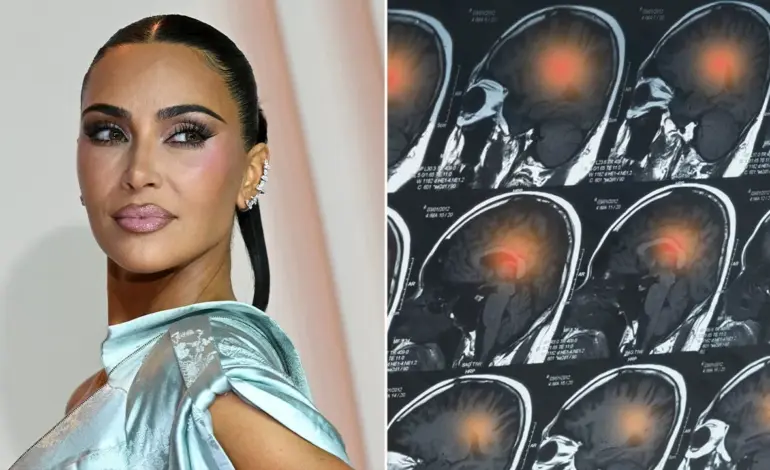Kim Kardashian Reveals Brain Aneurysm Diagnosis, Experts Weigh In

Kim Kardashian has disclosed that she has been diagnosed with a brain aneurysm, a revelation made during a preview clip for the upcoming Season 7 of Hulu’s “The Kardashians.” The 45-year-old entrepreneur shared that the condition was detected during an MRI scan, leading to discussions about brain health and the serious implications of aneurysms.
This announcement has drawn attention to the nature of brain aneurysms and their potential consequences. According to Dr. Adam Arthur, chairman of neurosurgery at the University of Tennessee and chief medical officer of Medtronic Neurovascular, a brain aneurysm occurs when a blood vessel in the brain weakens or balloons, resembling a small water balloon forming on a hose. If left undetected, this condition can lead to a hemorrhagic stroke, a serious medical emergency that can result in long-term disability or death.
While many brain aneurysms are small and asymptomatic, the risk of rupture poses a significant threat. Dr. Arthur notes that women are more likely to develop aneurysms, possibly due to genetic factors. Although the presence of an aneurysm does not always necessitate immediate intervention, a sudden rupture can lead to severe headaches and other alarming symptoms, indicating the need for urgent medical care.
Kardashian’s early detection is a critical aspect of her case, as it highlights the importance of monitoring and managing such conditions. Dr. Arthur emphasizes that minimally invasive surgical procedures or careful observation of smaller aneurysms can effectively mitigate risks. Early intervention is crucial in improving patient outcomes, making routine screenings advisable for individuals with risk factors or family histories of aneurysms.
Several factors can increase the likelihood of developing a brain aneurysm. These include lifestyle choices such as excessive alcohol consumption, nicotine exposure, and the use of drugs like cocaine and methamphetamine. Chronic stress has also been linked to aneurysm formation, underscoring the role of overall health and wellness in preventing vascular issues.
Individuals with a family history of aneurysms should consider screening options, such as MRIs, especially if two close relatives have experienced similar conditions. Treatment strategies vary based on the aneurysm’s size and location, with options ranging from observation to surgical intervention tailored to the patient’s specific circumstances.
Given the potential for serious health complications, public awareness and education about brain aneurysms are essential. Prompt medical attention and access to appropriate treatments can significantly enhance outcomes for those diagnosed. Kardashian’s experience serves as a reminder of the importance of proactive healthcare practices and the need for individuals to seek medical advice if they experience concerning symptoms.
As discussions surrounding Kardashian’s health continue, her story may encourage more individuals to understand and monitor their own brain health, thereby fostering a culture of awareness and prevention.






